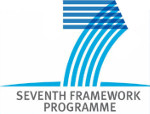Sustainable Production of Drug-Loaded Particles by Membrane Emulsification
Albisa, A. (Universidad de Zaragoza) ; Piacentini, E. ; Arruebo, M. (Universidad de Zaragoza) ; Sebastian, V. (Universidad de Zaragoza) ; Giorno, L.
Resumen: As the field of drug delivery is expanding into consumer products, it is essential to advance in the development of efficient synthesis technologies while preserving, at the same time, human health and the environment for future generations. Here, the sustainable development of polymeric particles for drug delivery is described. Poly(ethylene glycol) methyl ether-block-poly(lactide-co-glycolide) based particles containing dexamethasone were produced by membrane emulsification-solvent diffusion methods. The ability of the synthesis process to control particle-size distribution and morphology and its green impactful (energy consumption, simple (sEF) and complete (cEF) E factor) were evaluated. Particles with sufficiently narrow distribution in their droplet size and mean diameter similar to the membrane pore diameter were produced by increasing the dispersed phase flux to 12.84 L h-1 m-2, minimizing the maximum shear stress to 1.12 Pa and the energy consumption to 3.96 × 105 J m-3. The impact of the solvent used on size distribution, particles morphology and green performance scores was also studied. More uniform particles, with dense and slightly rough surface, high encapsulation efficiency and drug loading were obtained by replacing dichloromethane with ethyl acetate. The E factor was also decreased by 80%. Results demonstrated that membrane emulsification is an environmentally improved method for the production of drug delivery systems with enormous impact in terms of formulation quality, energy consumption reduction and waste minimization.
Idioma: Inglés
DOI: 10.1021/acssuschemeng.8b00401
Año: 2018
Publicado en: ACS sustainable chemistry & engineering 6, 5 (2018), 6663-6674
ISSN: 2168-0485
Factor impacto JCR: 6.97 (2018)
Categ. JCR: ENGINEERING, CHEMICAL rank: 9 / 138 = 0.065 (2018) - Q1 - T1
Categ. JCR: GREEN & SUSTAINABLE SCIENCE & TECHNOLOGY rank: 5 / 35 = 0.143 (2018) - Q1 - T1
Categ. JCR: CHEMISTRY, MULTIDISCIPLINARY rank: 26 / 172 = 0.151 (2018) - Q1 - T1
Factor impacto SCIMAGO: 1.666 - Chemical Engineering (miscellaneous) (Q1) - Renewable Energy, Sustainability and the Environment (Q1) - Environmental Chemistry (Q1) - Chemistry (miscellaneous) (Q1)
Financiación: info:eu-repo/grantAgreement/EUR/ERASMUS/EUDIME-2011-0014
Financiación: info:eu-repo/grantAgreement/EC/FP7/614715/EU/A Photo-triggered On-demand Drug Delivery System for Chronic Pain/NANOHEDONISM
Financiación: info:eu-repo/grantAgreement/ES/ISCIII/CIBER-BBN
Tipo y forma: Article (PostPrint)
Área (Departamento): Área Ingeniería Química (Dpto. Ing.Quím.Tecnol.Med.Amb.)
Exportado de SIDERAL (2019-11-27-15:46:36)
Visitas y descargas
Idioma: Inglés
DOI: 10.1021/acssuschemeng.8b00401
Año: 2018
Publicado en: ACS sustainable chemistry & engineering 6, 5 (2018), 6663-6674
ISSN: 2168-0485
Factor impacto JCR: 6.97 (2018)
Categ. JCR: ENGINEERING, CHEMICAL rank: 9 / 138 = 0.065 (2018) - Q1 - T1
Categ. JCR: GREEN & SUSTAINABLE SCIENCE & TECHNOLOGY rank: 5 / 35 = 0.143 (2018) - Q1 - T1
Categ. JCR: CHEMISTRY, MULTIDISCIPLINARY rank: 26 / 172 = 0.151 (2018) - Q1 - T1
Factor impacto SCIMAGO: 1.666 - Chemical Engineering (miscellaneous) (Q1) - Renewable Energy, Sustainability and the Environment (Q1) - Environmental Chemistry (Q1) - Chemistry (miscellaneous) (Q1)
Financiación: info:eu-repo/grantAgreement/EUR/ERASMUS/EUDIME-2011-0014
Financiación: info:eu-repo/grantAgreement/EC/FP7/614715/EU/A Photo-triggered On-demand Drug Delivery System for Chronic Pain/NANOHEDONISM
Financiación: info:eu-repo/grantAgreement/ES/ISCIII/CIBER-BBN
Tipo y forma: Article (PostPrint)
Área (Departamento): Área Ingeniería Química (Dpto. Ing.Quím.Tecnol.Med.Amb.)
Exportado de SIDERAL (2019-11-27-15:46:36)
Permalink:
Visitas y descargas
Este artículo se encuentra en las siguientes colecciones:
articulos > articulos-por-area > ingenieria_quimica
Notice créée le 2019-05-15, modifiée le 2019-11-27
